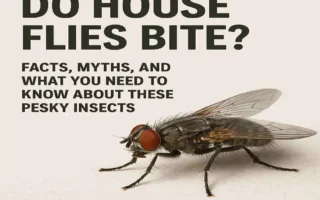Bees are essential to our ecosystem, playing a critical role in pollination and food production. However, as helpful as they are outdoors, bees inside your home can cause concern. If you’ve ever asked yourself, “How are bees getting into my house?” or wondered about cleaning tips to keep them away, you’re not alone. Many homeowners face this issue, especially during the warmer months.
Why Bees Are Appearing Indoors

It’s not uncommon to spot a cleaning house bee or two buzzing around your house, especially in suburban or rural areas. Bees often wander indoors for various reasons, but understanding their behavior is key to addressing the problem effectively.
Bees Are Attracted to Resources
Bees are not pests by nature. They only enter homes when they find something they need, such as:
- Food sources: Open sweets, fruits, sugary beverages, or even scents of flowering plants near windows can attract bees.
- Water: Standing water in sinks, pet bowls, or leaky faucets can draw them inside.
- Shelter: Cracks, gaps, and warm spaces in your walls or attic mimic the natural cavities bees look for to build hives.
Seasonal Patterns
Bee activity peaks during spring and summer, when colonies are actively foraging and growing. This is the time when bees are most likely to enter homes, either scouting for resources or searching for a new place to establish a hive.
Pheromone Trails
Bees communicate through pheromones. If one bee finds its way into your house and discovers food or shelter, it may leave a pheromone trail that signals others to follow.
Common Entry Points: How Are Bees Getting Into My House?
Bees are small, and they can fit through surprisingly tiny spaces. Some of the most common entry points include:
Cracks and Gaps in Walls or Foundations
Small cracks in your walls, foundation, or siding can serve as highways for bees to enter your home. Bees need only a 1/8-inch gap to squeeze through, making deteriorating mortar, utility penetrations, and expansion joints key areas to inspect.
Vents and Chimneys
- Attic vents and dryer vents are standard bee entryways, as they resemble the natural cavities bees prefer for nesting.
- Uncapped chimneys can also invite bees, as they mimic the hollow spaces bees use in the wild.
Roofline and Eaves
- Gaps under shingles or soffits make excellent entry points for bees.
- Carpenter bees, in particular, are notorious for drilling holes into wooden eaves and fascia to lay eggs.
Windows and Doors
- Worn-out weather stripping or ill-fitting screens can let bees in.
- Leaving windows open without screens during warm months is an open invitation to pests.
Outdoor Lighting and Scent Trails
- Certain types of outdoor lighting, particularly UV lights, can attract nocturnal bees and other insects.
- Odors from trash bins, compost piles, or leftover food can also draw bees toward your home.
Signs You Have Bees in Your Home
Identifying the presence of bees early can help you address the issue before it escalates into a larger problem. Here are some common signs to watch for:
- Buzzing sounds: Persistent buzzing in walls, ceilings, or attics is a clear indicator of bee activity.
- Bee traffic: Frequent sightings of bees around specific areas of your house, like vents or eaves, suggest an entry point.
- Wax buildup or droppings: Honeybees may leave wax or honey residue behind, while carpenter bees can create small piles of sawdust.
- Swarming behavior: Bees gathering in large numbers near a window, door, or structure may indicate a nearby hive.
Immediate Steps to Take When You Spot Bees
If you notice bees inside your cleaning home, stay calm. Bees are not aggressive unless provoked, so it’s essential to handle the situation carefully. Follow these steps:
- Stay calm and avoid swatting: Swatting can provoke bees, increasing the likelihood of stings.
- Identify the species: Take a photo of the bee from a safe distance to help identify whether it’s a honeybee, carpenter bee, or another species.
- Do not use chemicals: Spraying pesticides or insecticides can cause more harm than good. It’s also illegal in some areas to harm protected bee species.
- Seal off the area: Close doors or windows to contain the bees and prevent more from entering.
- Contact a professional: Reach out to a licensed beekeeper or pest control specialist trained in humane bee removal.
Why Killing Bees Is Not the Best Solution
It’s tempting to reach for a can of pesticide when bees invade your home, but this is not the best approach. Here’s why:
- Bees are vital pollinators: Bees play a crucial role in pollinating crops and plants. Killing them can negatively impact the environment.
- Pesticides harm ecosystems: Chemical sprays can harm other beneficial insects and wildlife.
- Dead bees attract pests: If bees die inside your walls, their bodies can attract secondary pests, such as beetles or ants.
Instead, always opt for humane removal and relocation.
Practical Cleaning Tips to Keep Bees Away

One of the most effective ways to prevent bees from entering your home is by maintaining a clean, unattractive environment. Here are some tried-and-true cleaning tips:
Eliminate Food Sources Indoors
- Store sugary foods, fruits, and drinks in airtight containers.
- Clean countertops, floors, and sinks daily to remove food residue.
- Take out the trash regularly and use bins with tight-fitting lids.
Clean Outdoor Dining Areas
- Wipe down tables, chairs, and grills after use.
- Avoid leaving pet food outside overnight.
Remove Standing Water
- Fix leaky faucets and pipes.
- Empty birdbaths, plant saucers, and buckets weekly.
Seal Entry Points
- Use caulk or expanding foam to seal cracks and gaps in walls, windows, and foundations.
- Replace damaged screens and weatherstripping on doors and windows.
Maintain Yard Hygiene
- Trim overgrown vegetation near your home.
- Remove fallen fruit, flowers, or other organic materials that may attract bees.
- Avoid planting nectar-rich or highly fragrant flowers near entryways.
Natural Deterrents That Work
If you prefer using house natural cleaning solutions to repel bees, here are some effective options:
Peppermint Oil Spray
Bees dislike the smell of peppermint. Mix 10–15 drops of peppermint essential oil with water in a spray bottle and apply it around entry points weekly.
Vinegar and Water Solution
A 50:50 mixture of vinegar and water can be used to clean surfaces and remove scent trails left by foraging bees.
Citronella and Lemongrass
Planting citronella or using lemongrass candles can help mask scents that attract bees.
Cucumber Peels
Place cucumber peels in areas where bees are likely to enter. Although anecdotal, some homeowners report success with this method.
Structural Prevention: Bee-Proofing Your Home
Preventing bees from entering your home requires regular maintenance and structural improvements. Here’s what you can do:
- Inspect your home annually: Focus on rooflines, siding, and foundation for cracks or gaps.
- Install vent covers and chimney caps; use fine-mesh screens to block bee entry.
- Paint or treat wooden surfaces: Carpenter bees avoid painted or treated wood.
- Switch to LED lighting: Bees are less attracted to warm-white or yellow LED lights.
Cleaning After Bee Removal: Eliminating Attractants
Once bees have been removed, thorough cleaning is necessary to prevent future infestations. Follow these steps:
- Remove wax and honeycomb: Scrub the area with hot water and mild detergent.
- Deodorize the space: Use enzyme-based cleaners to eliminate pheromone trails.
- Vacuum and sanitize: Use a HEPA vacuum to remove debris, and clean all surfaces with vinegar or a citrus-based cleaner.
- Dispose of materials properly: Seal hive materials in plastic bags and discard them far from your home.
DIY vs. Professional Bee Removal: A Comparison
Factor DIY Removal Professional Removal
Cost Low (initially) Higher upfront cost
Safety High risk of stings Trained and protected
Effectiveness: Often incomplete, Complete hive removal
Hive Relocation Rarely possible Common practice
Residue Cleaning may be overlooked or included in the service
Warranty/Support None Often provided




